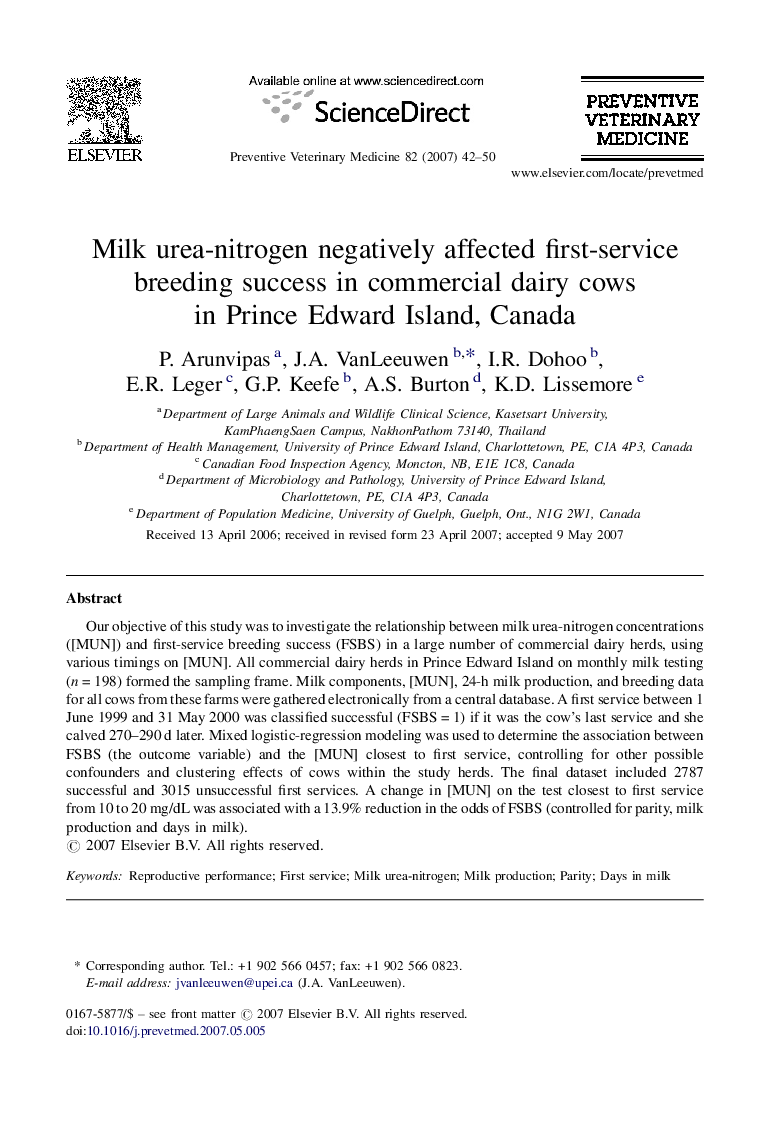| Article ID | Journal | Published Year | Pages | File Type |
|---|---|---|---|---|
| 2453302 | Preventive Veterinary Medicine | 2007 | 9 Pages |
Our objective of this study was to investigate the relationship between milk urea-nitrogen concentrations ([MUN]) and first-service breeding success (FSBS) in a large number of commercial dairy herds, using various timings on [MUN]. All commercial dairy herds in Prince Edward Island on monthly milk testing (n = 198) formed the sampling frame. Milk components, [MUN], 24-h milk production, and breeding data for all cows from these farms were gathered electronically from a central database. A first service between 1 June 1999 and 31 May 2000 was classified successful (FSBS = 1) if it was the cow's last service and she calved 270–290 d later. Mixed logistic-regression modeling was used to determine the association between FSBS (the outcome variable) and the [MUN] closest to first service, controlling for other possible confounders and clustering effects of cows within the study herds. The final dataset included 2787 successful and 3015 unsuccessful first services. A change in [MUN] on the test closest to first service from 10 to 20 mg/dL was associated with a 13.9% reduction in the odds of FSBS (controlled for parity, milk production and days in milk).
